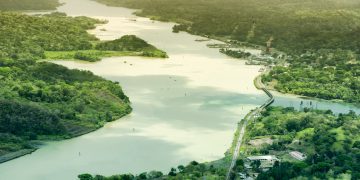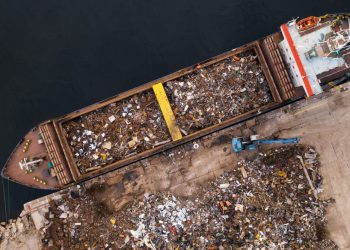Every day, containers are loaded to or discharged from Maersk Line vessels. Because these ships need to depart from one port and arrive at another at a specific time, careful planning is required when arranging containers on a vessel — what we call “stowing”.
What happens in one port will impact what happens in the next; thus, it is important to stow a vessel properly and efficiently.
A ship like the Triple-E, which can carry up to 18,000 Twenty-foot Equivalent Unit (TEU) containers, makes stowage a much more exciting challenge.
The stowage cycle
Maersk Line stowage planners stow vessels in a “round-trip planning concept” considering all ports in the rotation from the very beginning. It is a 24-7-365 job to ensure that container ships are loaded and unloaded safely and efficiently.
Stowage is planned about 12 to 24 hours before a vessel arrives at a port. The loadlist for each vessel tends to keep changing, so stowage is done quite close to its arrival.
Once the loadlist is finalised, the stowage planner decides which groups of containers will be loaded onto specific bays on the vessel so that cranes in various ports in the rotation can work optimally. He/she also distributes container weights so that the vessel can sail in a stable condition, and pays special attention to dangerous cargo, breakbulk, reefers and cargo needing special positions onboard. The stowage plan will be checked with “stability systems” to ensure that the vessel can safely sail with given conditions. Afterwards, the plan is sent to the loading terminal.
The terminal then “fits” the containers in its yard to the plan, taking into consideration the ports of discharge, container type (e.g., reefers) and weight. A copy of the terminal plan is sent back to the stowage planners for verification.
Once approved, the terminal plan is presented to the Chief Officer on arrival for his final approval before the vessel is finally loaded.
The vessel departs for its next port call, and the cycle repeats.
Which container goes where, and why?
A reliable stowage plan gives special attention to five things: safety, flexibility, productivity, cost and optimal intake. It should consider the security of vessel, crew and cargo alike. It should also be adaptable to port, service and vessel requirements and restrictions. Moreover, it should continuously reduce inefficiencies and ensure that resources are used optimally. Last but not the least, it must secure the highest possible intake of cargo while supporting the lowest operational execution cost, by planning for minimal restows and lowest bunker cost.
In stowing the Triple-E, the key items to evaluate are the following:
- Port destinations: Containers to be discharged at the next port of call should be on top.
- Weight distribution: Containers should be loaded or discharged equally over a set number of bays. Too much weight on the bow (front), aft (back), left or right side of the ship will cause the vessel to dip at an angle; too much weight at both the bow and aft will cause the vessel to bend. As a rule, heavier containers are placed lower in the vessel because it gives the ship more stability
|
Experience knows best
The Maersk Line fleet is 550-ship strong and makes around 32,000 port calls annually. Time is of the essence when it comes to stowing a vessel, especially one with the size and capacity of the Triple-E.
You might think that technology is the main enabler for our planners and coordinators to stow on time, but actually the way we stow ships is surprisingly manual.
“We have a system that shows us a visual representation of the vessel and cargo, but there is no automation in the process,” says Tom Bebbington, stowage analyst for the Asia Pacific Liner Operations Cluster. “The stowage coordinator is able to decide where best to place a container after years of continuously doing it and relearning about it, combined with an eye for detail and a thorough knowledge of the service and vessels.”
“The human brain is still a far superior ‘tool’ when it comes to stowage,” he adds.
The number of considerations needed when stowing a vessel means that there are also many possible stowage combinations. None of them are 100% right or wrong; the process is all about keeping options open and retaining flexibility.
Stowing the Triple-E is a large and complex puzzle indeed — but one that takes both logic and creativity to solve.
Source & Image Credits : Maersk’s dedicated website to Triple-E www. worldslargestship.com
In the start, I was forthright with you propecia before and after has changed my existence. It has become much more fun, and now I have to run. Just as it is improbable to sit.





































































